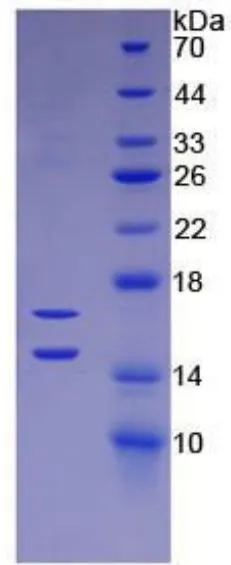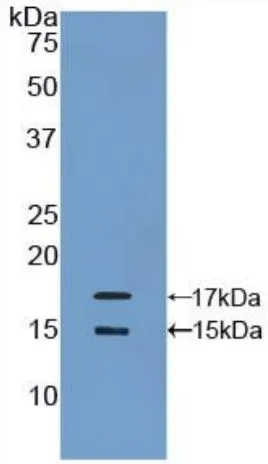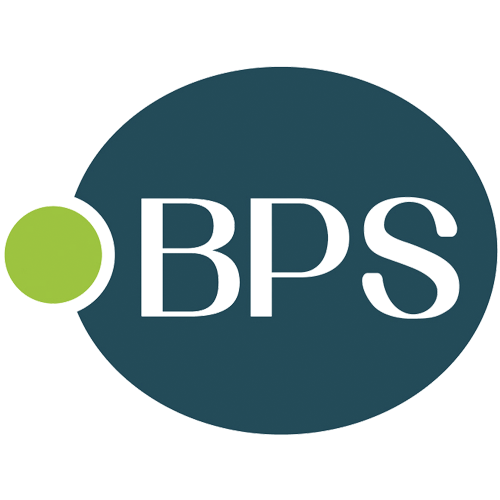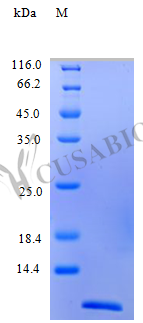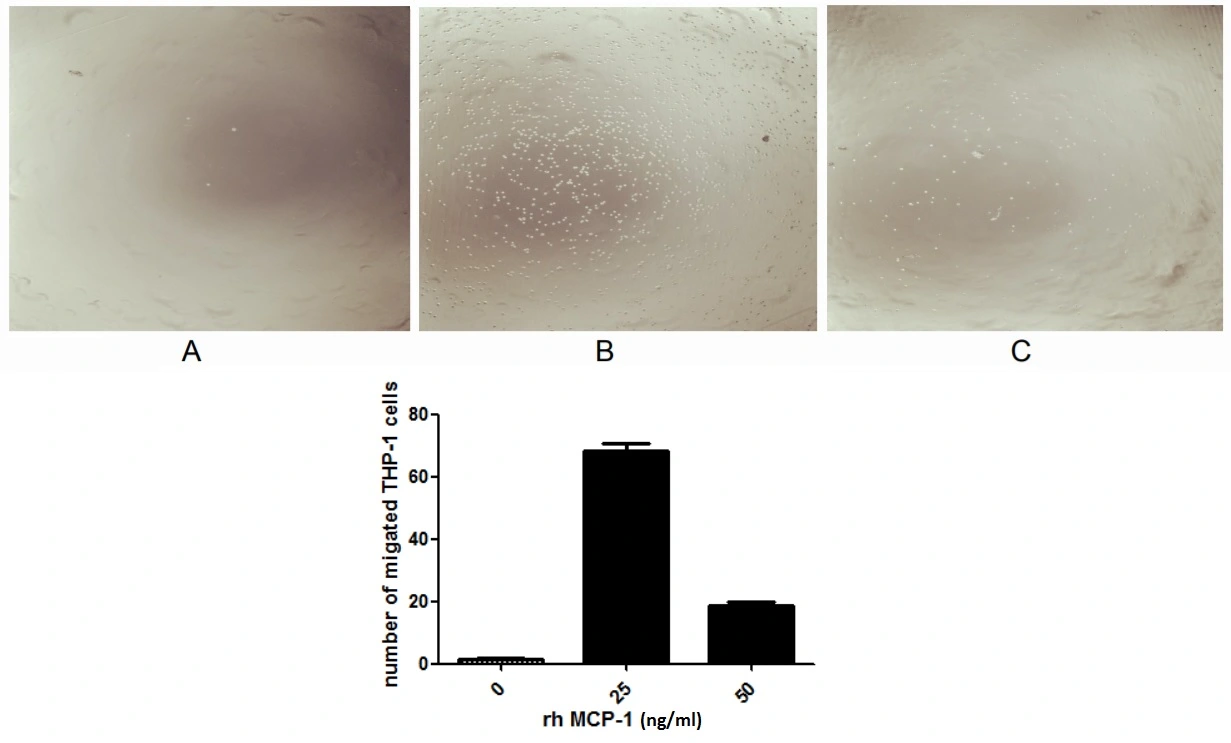
The chemotactic effect of GTX00415-pro Human MCP1 / CCL2 protein (active). Upper: (A) THP-1 cells were seeded into the upper chambers and serum free RPMI-1640 without MCP-1 was added in lower chamber, then cells in lower chamber were observed at low magnification (x100) after incubation for 3hrs. (B) THP-1 cells were seeded into the upper chambers and serum free RPMI-1640 with 25 ng/ml MCP-1 was added in lower chamber, then cells in lower chamber were observed at low magnification (x100) after incubation for 3hrs. (C) THP-1 cells were seeded into the upper chambers and serum free RPMI-1640 with 50 ng/ml MCP-1 was added in lower chamber, then cells in lower chamber were observed at low magnification (x100) after incubation for 3hrs. Lower: The number of migrated cells were counted at high magnification (x400) randomly (five fields for each filter).
Human MCP1 / CCL2 protein, His tag (active)
GTX00415-PRO
ApplicationsFunctional Assay
Product group Proteins / Signaling Molecules
Protein IDP13500
Overview
- SupplierGeneTex
- Product NameHuman MCP1 / CCL2 protein, His tag (active)
- Delivery Days Customer9
- Application Supplier NoteMCP-1 (monocyte chemoattractant protein 1), also known as CCL2 (C-C motif chemokine 2), is a small cytokine that belongs to the CC chemokine family. MCP-1 has been described as a chemoattractant for monocytes and proven to be able to induce chemotactic migration of THP-1 cells. Therefore, chemotaxis assay used 24-well microchemotaxis system was undertaken to detect the chemotactic effect of MCP-1 on the human monocytic cell line THP-1. Briefly, THP-1 cells were seeded into the upper chambers (100 microl cell suspension, 106 cells/ml in RPMI-1640 with 0.5% FBS) and MCP-1 (25 and 50 ng/ml diluted separately in serum free RPMI-1640) was added in lower chamber with a polycarbonate filter (8 microm pore size) used to separate the two compartments. After incubation at 37C with 5% CO2 for 3h, the filter was removed, then cells in low chamber were observed by inverted microscope at low magnification (x100) and the number of migrated cells were counted at high magnification (x400) randomly (five fields for each filter). MCP-1 is able to induce migration of THP-1 cells, and the optimum chemotactic concentration of MCP-1 is about 25 ng/ml.
- ApplicationsFunctional Assay
- CertificationResearch Use Only
- ConjugateUnconjugated
- Protein IDP13500
- Protein NameC-C motif chemokine 2
- Scientific DescriptionThis gene is one of several cytokine genes clustered on the q-arm of chromosome 17. Chemokines are a superfamily of secreted proteins involved in immunoregulatory and inflammatory processes. The superfamily is divided into four subfamilies based on the arrangement of N-terminal cysteine residues of the mature peptide. This chemokine is a member of the CC subfamily which is characterized by two adjacent cysteine residues. This cytokine displays chemotactic activity for monocytes and basophils but not for neutrophils or eosinophils. It has been implicated in the pathogenesis of diseases characterized by monocytic infiltrates, like psoriasis, rheumatoid arthritis and atherosclerosis. It binds to chemokine receptors CCR2 and CCR4. [provided by RefSeq, Jul 2013]
- Storage Instruction-20°C or -80°C,2°C to 8°C
- UNSPSC12352202

